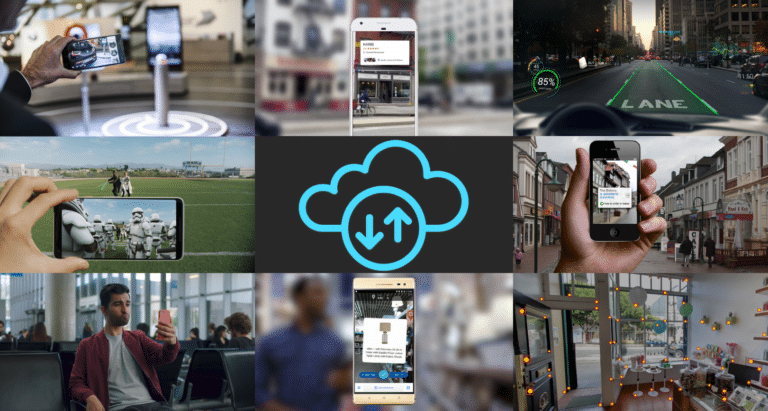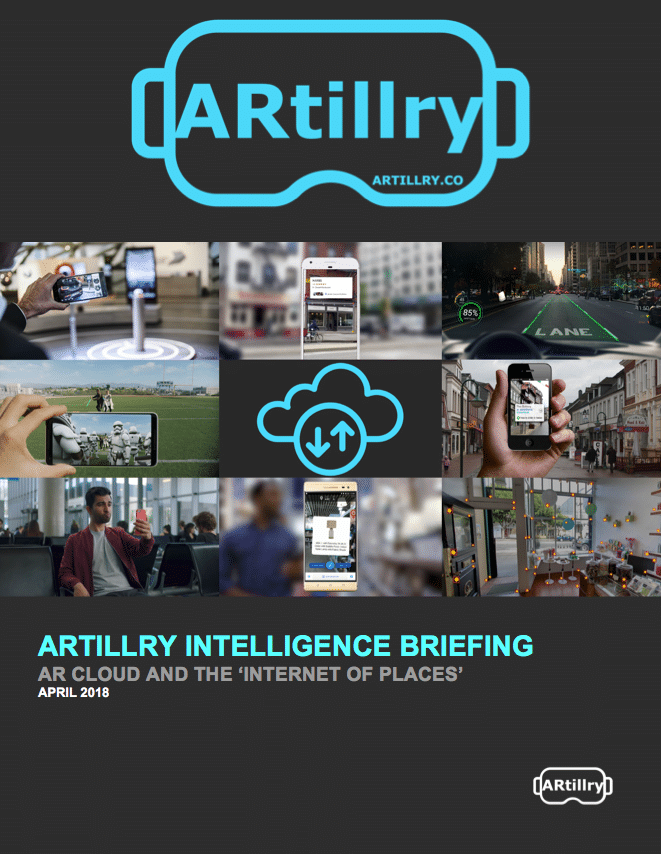
This post is adapted from ARtillry’s latest Intelligence Briefing, AR Cloud and the ‘Internet of Places.’ It includes some of its data and takeaways, including original survey research. More can be previewed here and subscribe for the full report.
When discussing the need for an AR Cloud, a question that often arises is “don’t we already have that?” For example, Pokémon Go has geo-tagged assets that are (kind of) persistent across sessions. Similarly, the Google AR examples we covered last week rely on cloud data.
The answer is that these are sort of mini-AR clouds. Google utilizes Street View and other data as mentioned, while Pokémon Go works through a GPS database built over years from its forebear, Ingress. Other startups are building enabling technologies for image persistence, such as YouAR.
But these are smaller and proprietary AR clouds. And they often involve giants that can afford, or have spent years building those clouds. To unlock the AR app economy and revenue projections requires a universal and open AR cloud that can be tapped and fed by billions of phones.
“Fed” is the operative word in the previous sentence. The AR cloud’s outer bounds are as vast as the physical world itself, at least the inhabited parts. The point is, it’s huge and therefore so is the task of populating it with useful data like positional mapping and object blueprints.
The prevailing wisdom is that a job so big can’t be accomplished by one entity – no matter how big. Google for example built a web index using crawlers, and the analog-world equivalent is essentially cameras. It’s covered some ground through street view cameras, but it will need more.
That leads to a crowd-sourced approach All of these cameras can capture data and feed the AR cloud, so it perpetually builds over time — like Google’s web index. Indeed, Google Lens and VPS will likely collect mapping data as people are using them. Pokemon Go will do the same.
The “Who?”
The crowd-sourced approach is what 6D.ai is pioneering. Think of it like Waze for the AR Cloud: Devices tap into the data, while feeding back the 3D mapping data they capture. And through that, the physical world gets mapped. 6D.ai’s technology will be packaged as an API for AR developers.
This will work best with apps that have massive usage and long outdoor sessions. Pokémon Go for example is well-suited to collect mapping data as users roam the physical world. There will likely be a Waze-like value exchange for opt ins, such as in-game incentives or performance.
Autonomous vehicles will also play a key role in populating the AR cloud. The computer vision that let’s AVs “see” the world is similar to AR’s area mapping. So as growing fleets of cars are mapping roads in order to drive on them safely, a byproduct could be valuable AR cloud data.
There are also smaller companies working on pieces of the puzzle. This will create an important value chain or ecosystem of supporting parts, such as image persistence. In addition to those mentioned, startups feeding into this ecosystem include Membit, Esher Reality and Ubiquity6.
![]()
Who ‘Owns’ the AR Cloud?
With all these entities contributing to an AR cloud, the question that emerges is, who will own it? The answer is likely no one. Just like no one owns the internet, the Internet of places will be similar. It’s more of a network of owned assets that follow standards and protocols to coexist.
But asset ownership and operational protocols still have to be established. Indeed, the protocols that govern the world wide web, though mostly open and decentralized, have provided important standards that have enabled the consumer internet to be so interlinked and interoperable.
That is likely a model that the Internet of places – fed and fueled by the AR cloud – will follow. For example, Google and other self-interested tech giants building AR cloud assets (e.g. image databases) will likely have ownership established and protected through a centralized authority.
This could take form in entities similar to ICANN and DNS. But more likely these governing entities won’t be traditional organizations, but will rather formulate under today’s native capabilities. In other words, it could be governed by something more automated or tokenized, such as blockchain.
Though we don’t want to get too deep into matters of the blockchain (an entirely separate report!), its capability aligns with the construction, maintenance and authentication of the AR Cloud. There will also be blockchain-centric issues like intellectual property and ownership of digital assets.
Preview more of the report here and subscribe to ARtillry PRO to access the whole thing.
Editor’s note: ARtillry recently interviewed 6D.AI founder Matt Miesnieks and will publish a profile later this week.
For deeper XR data and intelligence, join ARtillry PRO and subscribe to the free ARtillry Weekly newsletter.
Disclosure: ARtillry has no financial stake in the companies mentioned in this post, nor received payment for its production. Disclosure and ethics policy can be seen here.

